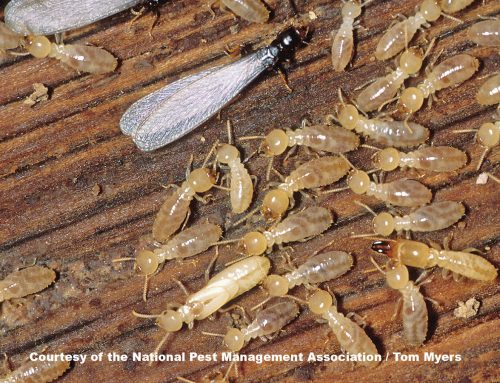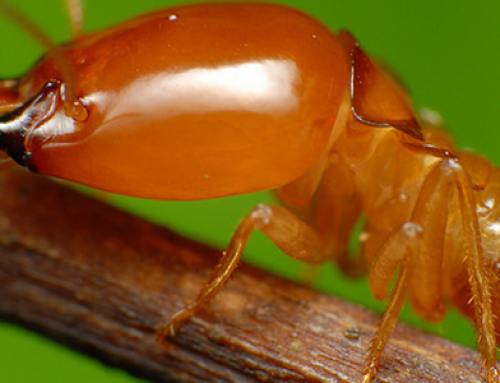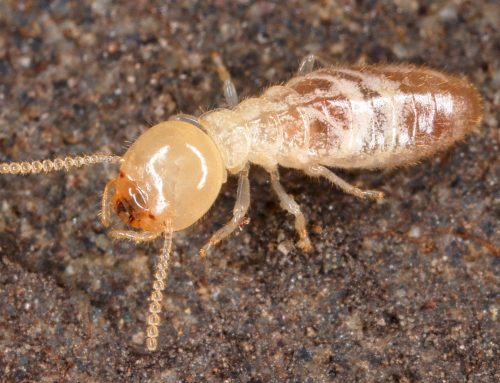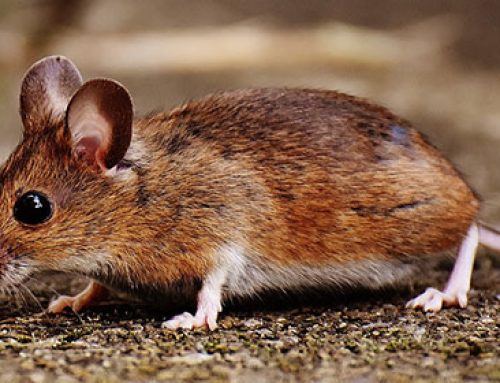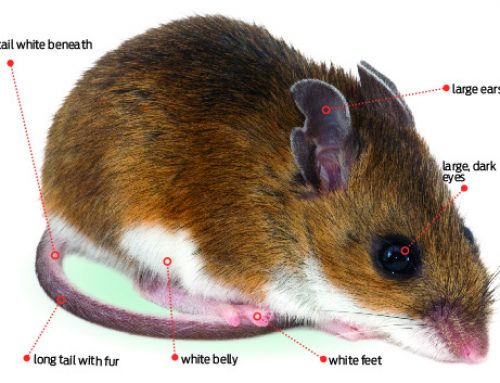Are you having a hard time getting rid of annoying flies? There can be many reasons why flies are still pestering you. It’s important to learn about the way flies behave in order to get rid of them, including the reasons why they are attracted to your home. There are three main species of flies you may be affected by – fruit flies, moth flies and fungus gnats. And all of them can spread disease.
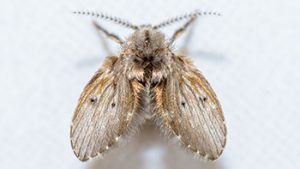 Moth Flies (aka drain flies, sewage gnats, or filter flies) look fuzzy at a glance because they have long, dense hair or scales on their wings. They are about a ¼ inch in length. Moth flies are not strong fliers, tend to fly only several feet at a time and usually crawl to travel. The life cycle of this fly is 1-3 weeks and an adult can live up to 2 weeks after emerging. Breeding grounds of the moth fly include plumbing, septic tanks, garbage disposals, drip drains for fridges and where there is moist, decaying organic matter. The female moth fly can lay up to 100 eggs that can hatch within 2 days. The larva is aquatic and feed on rotting matter found at the breeding grounds – such as spoiled fruit, food residue found in drains, bacteria and sludge. Adults are more active at night.
Moth Flies (aka drain flies, sewage gnats, or filter flies) look fuzzy at a glance because they have long, dense hair or scales on their wings. They are about a ¼ inch in length. Moth flies are not strong fliers, tend to fly only several feet at a time and usually crawl to travel. The life cycle of this fly is 1-3 weeks and an adult can live up to 2 weeks after emerging. Breeding grounds of the moth fly include plumbing, septic tanks, garbage disposals, drip drains for fridges and where there is moist, decaying organic matter. The female moth fly can lay up to 100 eggs that can hatch within 2 days. The larva is aquatic and feed on rotting matter found at the breeding grounds – such as spoiled fruit, food residue found in drains, bacteria and sludge. Adults are more active at night.
What you can do: Daily cleaning is a must. Make it a point to clean out drains with a stiff brush and sink cleaner, followed by hot water (this includes cleaning your bathroom and shower and sink drains). Be sure to use a bacteria based cleaner that is environmentally friendly. Any area where organic matter is decaying can be a breeding site for flies as well. Keep trash bins clean inside the bin, the outside of the bin and the surrounding areas. Eliminate standing water. Check areas around plumbing. Properly maintain your cleaning materials and hang them to dry to prevent them becoming a breeding ground.
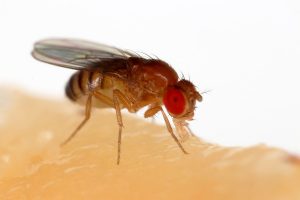 Fruit Flies – These flies are 1/8 inch in length and are dull yellow to dark brown in color. Some species have red eyes. The larva are small (about 1/10 to 1/5 inches long) and have a stalk-like breathing tube near the rear of the body. Fruit flies lay their eggs onto the surface of fermenting fruit or vegetables. They can also lay their eggs in areas where moisture or yeast are abundant. The female can lay up to 500 eggs that hatch in about 30 hours. In 5-6 days, the larvae complete development, having crawled to drier areas to become pupae. Adult flies are attracted to light and any fermenting fruits, vegetables, or liquids.
Fruit Flies – These flies are 1/8 inch in length and are dull yellow to dark brown in color. Some species have red eyes. The larva are small (about 1/10 to 1/5 inches long) and have a stalk-like breathing tube near the rear of the body. Fruit flies lay their eggs onto the surface of fermenting fruit or vegetables. They can also lay their eggs in areas where moisture or yeast are abundant. The female can lay up to 500 eggs that hatch in about 30 hours. In 5-6 days, the larvae complete development, having crawled to drier areas to become pupae. Adult flies are attracted to light and any fermenting fruits, vegetables, or liquids.
What you can do: To control fruit flies from multiplying and becoming worse, the breeding grounds must be identified. Which in this case are any nearby fermenting fruit, vegetables or liquids that may be left out for far too long. Many times, several of these places can be overlooked, like the inside of the garbage can or bottom of recycling bins. These places are where the larvae can be found emerging. It is important to get rid of the fermenting material, trap flies in baited jars or in some cases use aerosol, and take out the garbage – but your best bet would be to call professionals to take care of this flying nuisance and eliminate them at their source.
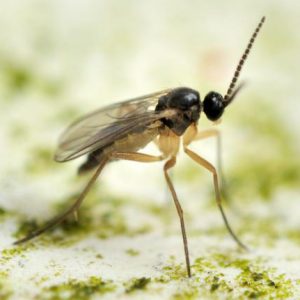 Fungus Gnats – These flies are very small (from 1/32 to 7/16 inches long), can be slender to robust in shape, are long-legged and are mosquito-like. Some fungus gnats lay their eggs in the larvae food. The eggs hatch in a few days. The lavae is not easily visible and can molt four five times in six to eight days. It has a well-developed head and 11-12 body segments. They become pupae in the ground and come out as adults after three days. Fungus gnats vary from brown and yellow, but are usually black in color and have smoke-colored wings. The larval food includes decaying organic matter and fungi growing in soil. Their breeding grounds vary from rotting wood, animal waste, under bark, over-watered plants, flat-roof structures, bird dropping in cages, old mulch, and more. Fungus gnats can pass through many structures since they are really small. Adults can be seen at windows and are often found at breeding sites.
Fungus Gnats – These flies are very small (from 1/32 to 7/16 inches long), can be slender to robust in shape, are long-legged and are mosquito-like. Some fungus gnats lay their eggs in the larvae food. The eggs hatch in a few days. The lavae is not easily visible and can molt four five times in six to eight days. It has a well-developed head and 11-12 body segments. They become pupae in the ground and come out as adults after three days. Fungus gnats vary from brown and yellow, but are usually black in color and have smoke-colored wings. The larval food includes decaying organic matter and fungi growing in soil. Their breeding grounds vary from rotting wood, animal waste, under bark, over-watered plants, flat-roof structures, bird dropping in cages, old mulch, and more. Fungus gnats can pass through many structures since they are really small. Adults can be seen at windows and are often found at breeding sites.
What you can do: As with other fly species, the prerogative is to find the breeding ground and eliminate it in order to cut the breeding cycle. Any location that supports fungal growth needs to be identified and cleared or dried out. Be careful not to overwater interior plants and clean out saucers and pots regularly. Fungus gnats are attracted to bright lights, so an insect light trap can be used to control populations. For a more aggressive approach, we recommend you call in the professionals at Bullfrog Pest Control, Inc. to use green solutions for pest elimination.
Why it’s hard to get rid of flies:
Flies are attracted to odors – sweet fermentation, rotting produce. Breeding grounds can be very hard to determine. It’s common for moth flies to breed in sink drains where food debris and decaying matter accumulates. Garbage cans are also a fly favorite, as these also contain rotting food and fermenting liquids that flies love. Any food left out in the open can fall victim to these flying pests, especially if the food is already decaying. Under refrigerators and under sinks are also popular locations since they provide moisture for the flies. Breeding sites can also include your outdoor proximity in areas where moisture can accumulate such as piles of leaves and other decaying organic matter.
The bottom line is: Excellent sanitation practices are vital to help you combat small fly issues.
Even though your cleanliness is your first line of defense, flies can still persist in hard-to-determine breeding sites.
Call to set up an appointment with one of our
knowledgeable technicians today! 1-800-572-9797
Resources: Cornell University Department of Entomology, http://idl.entomology.cornell.edu/
Pest Control Technology
Photos: Almanac.com, Wikipedia.com

